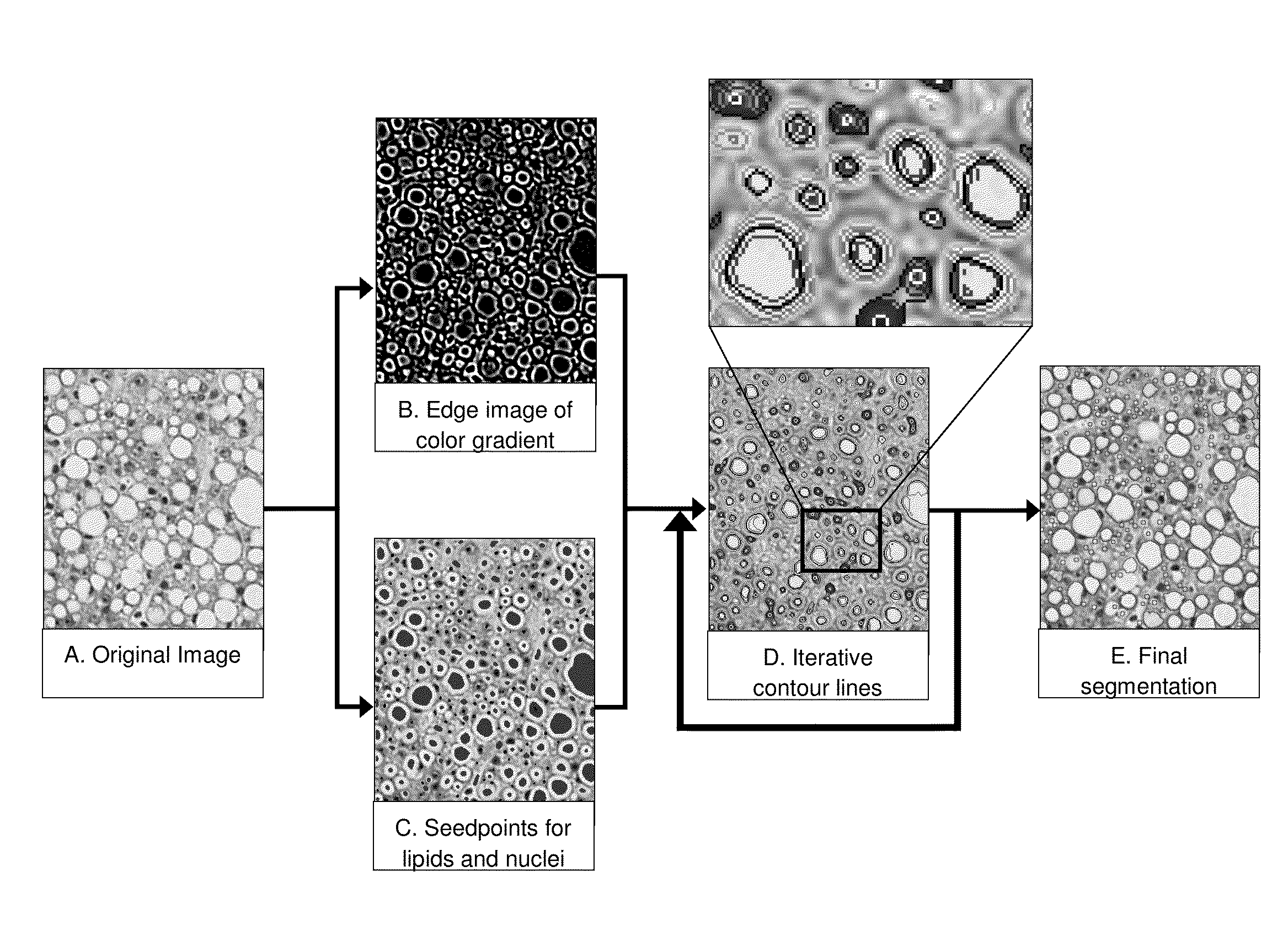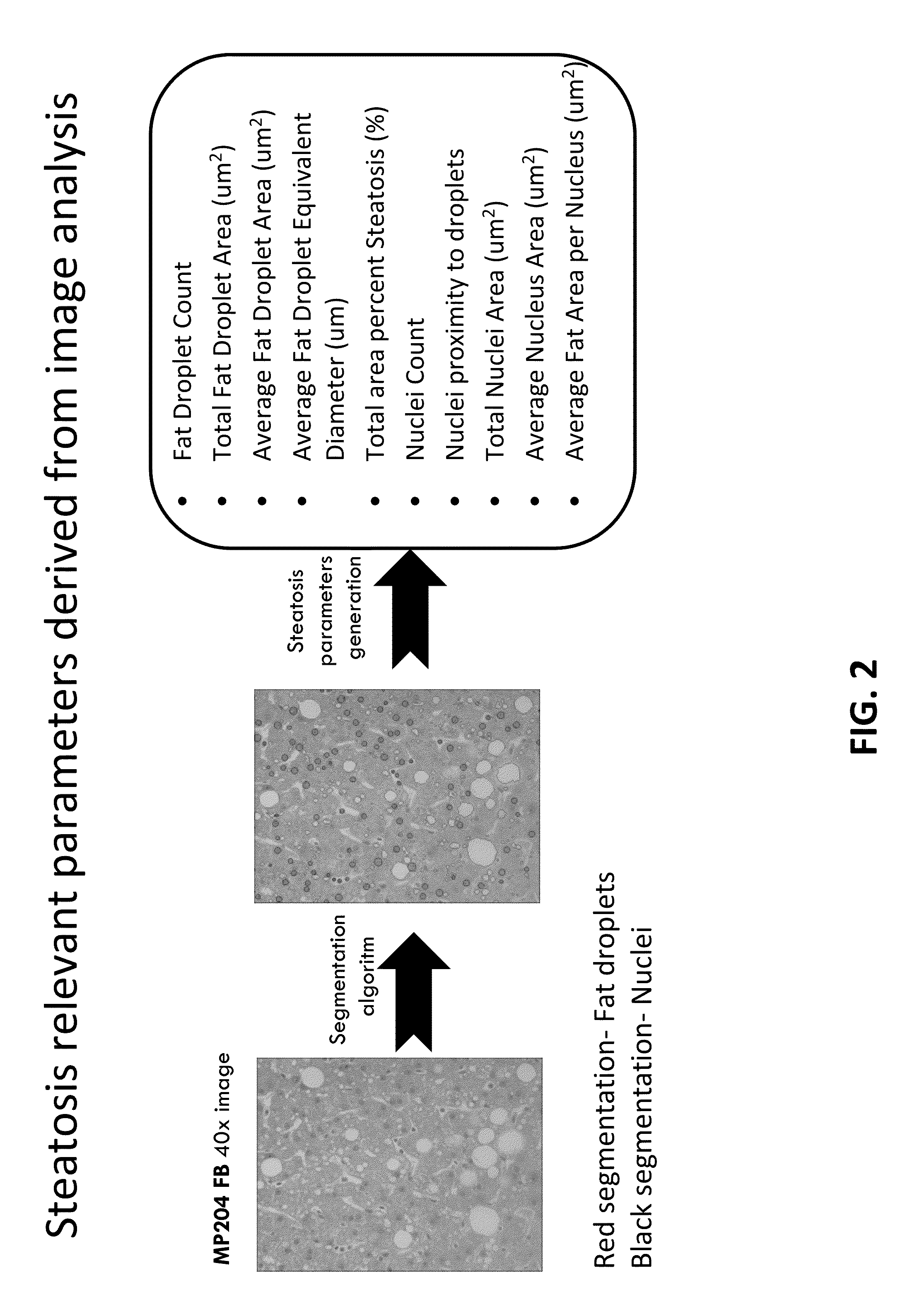Automated high-content image analysis system and methods and uses thereof
- Summary
- Abstract
- Description
- Claims
- Application Information
AI Technical Summary
Benefits of technology
Problems solved by technology
Method used
Image
Examples
example
Experimental Procedures
Hepatocyte Isolation and Culture
[0074]Male lean Zucker rats, (Charles River, Wilmington, Mass.) (310±20 g) were housed in a 12 h light-dark cycle and temperature-controlled environment (25° C.) with water and standard chow ad libitum. All experimental procedures were in accordance with National Research Council guidelines and approved by the Rutgers University Animal Care and Facilities Committee. Hepatocytes were isolated using a two-step in situ collagenase perfusion technique. Viability was 90±4% as determined by trypan-blue exclusion. Six-well culture plates (Beckton-Dickinson, Franklin Lakes, N.J.) were pretreated with 50 ug / ml rat type 1 collagen solution (Beckton-Dickinson) in 0.02M acetic acid (Sigma-Aldrich, St. Louis, Mo.) overnight at 4° C. and washed with phosphate buffered saline (PBS, Invitrogen, Grand Island, N.Y.). Freshly isolated hepatocytes were suspended (106 cells / ml) in standard hepatocyte medium and seeded (106 cells / well). After incubat...
PUM
 Login to View More
Login to View More Abstract
Description
Claims
Application Information
 Login to View More
Login to View More - R&D
- Intellectual Property
- Life Sciences
- Materials
- Tech Scout
- Unparalleled Data Quality
- Higher Quality Content
- 60% Fewer Hallucinations
Browse by: Latest US Patents, China's latest patents, Technical Efficacy Thesaurus, Application Domain, Technology Topic, Popular Technical Reports.
© 2025 PatSnap. All rights reserved.Legal|Privacy policy|Modern Slavery Act Transparency Statement|Sitemap|About US| Contact US: help@patsnap.com



